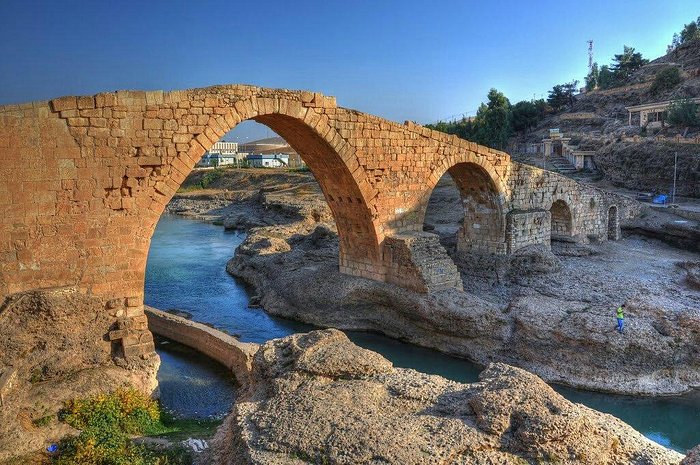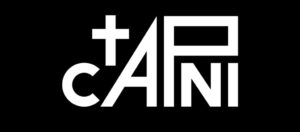Historical Introduction
Since 1864, Zakho has been a district of Mosul (in the Ottoman period), Mosul district (during the period of the monarchy in Iraq 1921 – 1958), or the province of Mosul or Nineveh (during the period of republican rule 1958 -). Thus, the district of Zakho was bigger than the district of Duhok, and the city of Zakho was larger than the city of Duhok, but because of its border location with Turkey, it was not set as a goernorate.
With the formation of Duhok Governorate in 1970 as part of the March 11, 1970 agreement between the central government and the leadership of the Kurdistan Revolution, Zakho district became a part of Duhok Governorate. The district of Zakho, along with the districts of Duhok, Amadiyah, Sumail, and Aqrah, constitute the administrative borders of Duhok Governorate, which is one of the three governorates, along with Erbil and Sulaymaniyah, the Kurdistan Region of Iraq.
But the actual administration of Duhok governorate goes beyond these districts to administer the district of Sheikhan, which, although its official administrative subordination falls under the Nineveh Governorate, its actual administration is under the Dohuk Governorate.
Due to the importance of the Zakho district, it was approved in 2021 as an administration directly linked to the Kurdistan Regional Council of Ministers. The center of Zakho district is the city of Zakho.
Zakho Location
The city of Zakho is located southwest of the Sindi Plain, which is famous for its fertility and various agricultural products throughout the seasons. Overlooking the city of Zakho is Bikhair Mountain, around which there are many accounts of the flood of the Prophet Noah, as some believe that it is the mountain on which Noah’s ark docked.
It is thus fifty-three kilometres north of the city of Duhok (the center of Duhok governorate), and 114 kilometres away from the city of Mosul.
Zakho is about 10 km from the Ibrahim Al Khalil border point with Turkey, and 25 km from the Iraqi-Syrian border.
Given the importance of its border location, it has gained commercial importance. Hence, it was one of the first cities in the region to open a commercial center in 1936, and a hotel in 1946 called the Khabour Hotel (after the river of Khabour which passes through the city) for overnight merchants.
Geographical Boundaries
Zakho district is one of the border districts of Iraq with neighbouring countries, bordered by Turkey to the north, and to the west by Syria. While the district of Amadiyah forms its eastern borders, the districts of Sumail and Duhok are its southern borders.
Basic Information
The area of Zakho district is 1378 square kilometre
And the number of its population, according to 2021 estimates 300 thousand people.
According to the administrative structure of the Iraqi state, each district consists of a number of aspects; In addition to the center of the city of Zakho and the surrounding villages, the sub-districts of Zakho district are:
- Guli and its center in Batoufa
- Sindi with its center Darkar Ajam
- Rizgari and its center Ibrahim Al Khalil
Ibrahim Al-Khalil (Ibrahim the close friend) was named by this name due to the prevailing belief that Ibrahim the father of the believers passed through it on his journey from Ur.
Dozens of villages belong to each of these sub-districts.
Name Origin
The first important historical event that took place in the city dates back to the year 401 BC when ten thousand Greek soldiers retreated and passed through the Zakho gate, which is called the ten thousand campaign or the Zenfon campaign.
There are many opinions on the origin of the name Zakho, but the most logical one in terms of linguistic derivation and historical depth is that it derives from the Syriac word of (ܙܟ̣ܘܬ̣ܐ) (Zakhotha) which means: victory, referring to the victory of Alexander the Great over the Parthians in a battle took place near Zakho.
This interpretation gains its plausibility from the fact that Syriac was the dominant language in the region in the early centuries before it retreated to the Kurdish language with the settlement of the Kurds in the region and their transformation into the majority.
Zakho Community
The Zakho community is a mixture of the Kurdish Muslim majority, Chaldean Christians, a minority of Syriac Catholics, and an Armenian minority, the majority of whom migrated to Zakho during the Ottoman genocide campaign in 1914.
However, one of the historical facts about the city of Zakho is that it was a center for the Syriac-speaking Jewish in Kurdistan, where they formed a large part of its population until the beginning of the twentieth century when their immigration to Israel began.
There is no Arab community in Zakho, with the exception of some families who have resided or are currently residing in Zakho due to occupational association.
The languages spoken in Zakho are Kurdish, Syriac, and Armenian, in addition to Arabic as it was the official language for schools and government departments until 1992 when Kurdish became the official language for schools (with one lesson for Arabic) and gradually became the language of communications and official departments, and Kurdish is the official and life language in the city of Zakho and all the district of Zakho.
The Landmarks Of The City
The historic Dalal Bridge is one of the most important Roman historical monuments in the region. Although its design and construction date back to the Roman era, there are many interpretations and stories about it. Including the Arab novel that the Arabs of the Abbasids built and called the Abbasid bridge (which is the name officially circulated).
There is a famous novel and myth about its building, which, given its heritage importance, popularity, and implications, we attach a definition to it.
Dalal Bridge has a total length of 114 meters and a width of 4.70 meters, and rises 15.5 meters above the surface of the river. It is constructed with carved stones
The Khabur River originates from Turkey to Iraqi territory and passes through the city of Zakho with a beautiful view before it flows into the Tigris River, where it represents the border triangle between Iraq, Turkey, and Syria.
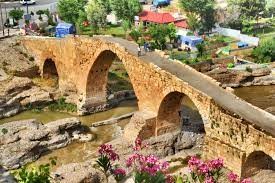
The Khabur River originates from Turkey to Iraqi territory and passes through the city of Zakho with a beautiful view before it flows into the Tigris River, where it represents the border triangle between Iraq, Turkey, and Syria.
The river in Zakho is branched into two branches that pass through it and return again to be one river.
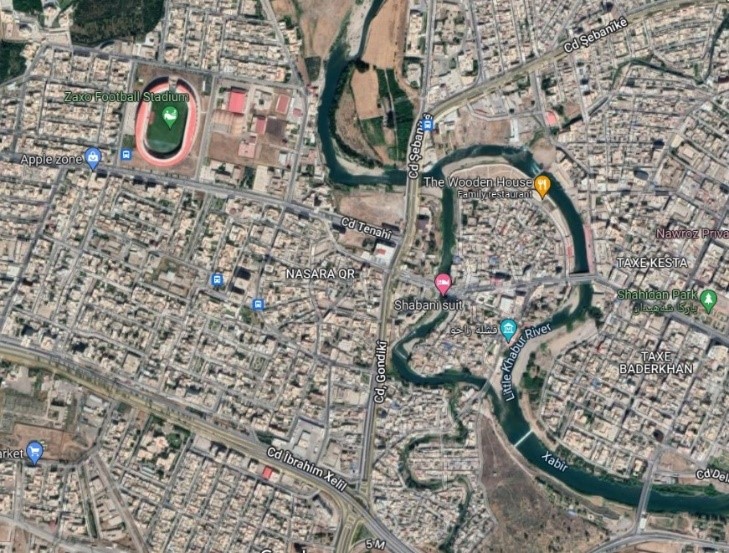
The Great Mosque of Zakho, was built after the Islamic invasion of Iraq in 641 AD.
Qishla (Barrack) or Zakho Castle is located on the western bank of the Khabur River.
The true history of this castle is not known, but some archaeologists believe that its history dates back to the third or fourteenth century AD.
As for the existing tower, it is older than the construction of the castle. And the castle was the home of the emirate during the era of the Emirate of Badinan.
The Archdiocese of the Chaldean Church, as Zakho region and its extension in modern Iraq and southern Turkey, is among the areas that were Christian throughout history and included diocesan centres, monasteries, schools, and churches of the Church of the East and the Syriac Orthodox Church.
With the conversion of a large part of the Church of the East and Syriac Orthodox Church to the Catholicism church, Zakho gradually became an episcopal center for the Chaldean Catholic Church since the nineteenth century.
The Syriac-Catholic Church of the Virgin Mary was built in 1850.
Zakho Tunnel which forms with its 3600 meter the longest tunnel in Iraq.
It was constructed to connect Duhok to Zakho in a modern, safe and short cut road.
The tunnel was officially opened by the Prime Minister Nejirvan Barzani on September 2018.
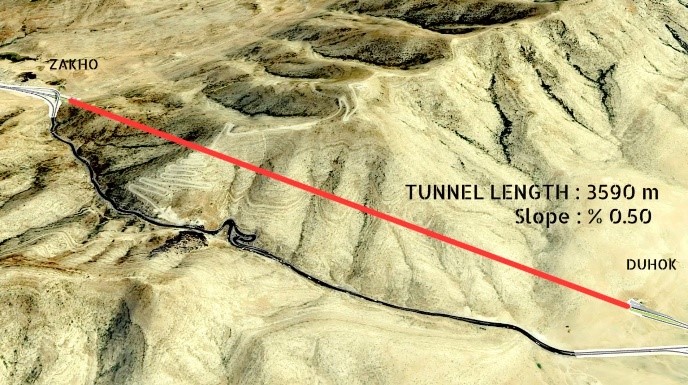
Zakho after First Gulf War 1991
During the first Gulf War in 1991 and the uprising of the Iraqi people against the regime, which was suppressed in the southern Shiites governorates with unparalleled bloody violence, and the advance of Iraqi army towards Kurdistan region which led to the mass exodus of the people of Kurdistan to the Turkish and Iranian borders for fear of the attacks of the Iraqi army to suppress the uprising in this region as well. The United Nation declared Kurdistan Region (north of the 36th parallel) a safe haven and no-fly zone, which was protected by the international coalition forces led by USA.
One of the direct and immediate results of this no-Fly zone and safe heaven was the return of the displaced to the cities and villages, among them the thousands of destroyed villages in Kurdistan (more than four thousand villages) that the regime had destroyed between 1974 to 1988.
With this return, humanitarian organizations and international institutions interested in human rights, in addition to international networks and media, flocked to the region to work and be informed, each according to his interests.
On the other hand, the protection of this area requires a military presence of the coalition forces and its management and logistics centres.
Because of the important strategic location that the city of Zakho possesses in terms of being a border city adjacent to Turkey, participating in the operations of the International Coalition, and hosting its forces, Zakho has hosted the operations management center of the Coalition Forces, which made Zakho a center for most of the foreign humanitarian organizations operating in Dohuk Governorate.
With the increase in the importance of the city of Zakho for the above reason, its importance increased in terms of being the only outlet for the region to communicate and trade with the outside, because the Iraqi central government imposed a harsh siege on Kurdistan, which had no outlet for external communication except Zakho with Turkey and the border ports in Sulaymaniyah with Iran.
This importance of the city of Zakho, especially the commercial one, resulted in a rapid expansion of the city in terms of construction, housing, and work.
Zakho after Second Gulf War 2003
With the US invasion of Iraq and the fall of the regime in 2003 and the subsequent collapse of the Iraqi state in all fields, a security vacuum and the spread of chaos, armed militias and organized crime groups in central and southern Iraq on one hand, and Turkey’s economic potential compared to other neighbouring Iraqi countries on the other hand, in addition to security stability and the administration in the region and the existence of a long commercial experience with Turkey, the volume of trade exchange between Iraq and Turkey doubled from 870 million dollars in 2003 to 13 billion dollars in 2013.
Since 2011, Iraq has been considered the second-largest importer of Turkish exports after Germany, and it is a candidate to precede Germany in absorbing various Turkish exports, primarily iron, construction materials, food products, and others.
All of this exchange passes through the Ibrahim Khalil border crossing in Zakho.
Thus, Zakho turned into one of the most important Iraqi commercial outlets.
This led to more economic growth and urban expansion, not only in Zakho but also in the Kurdistan Region in general, as the customs resources constitute an important proportion of the region’s resources.
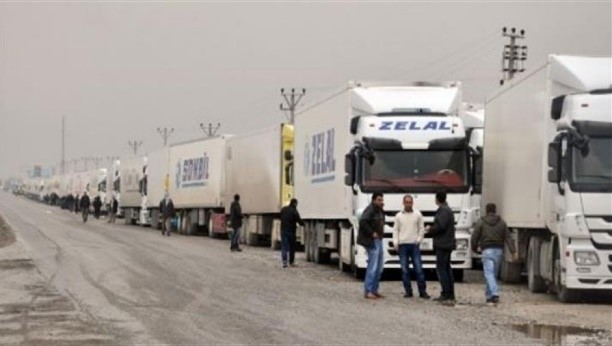
Zakho University
In year 2010 and due to the growing population of Zakho region on one hand, and the expansion of educational institutions on other hand, University of Zakho was founded to meet the needs of the high schools’ graduators to get academic studies in different fields.
Zakho University has now the below colleges/facualties:
- Faculty of Science/ 6 scientific departments
2. Faculty of Humanities/ 6 scientific departments
3. College of Administration and Economics/ 3 scientific departments
4. College of Engineering/ 2 scientific departments
5. Faculty of Education/ 4 scientific departments
6. College of Basic Education/ 5 scientific departments
7. College of Medicine/ 2 scientific departments
The number of students is around 3000.
Zakho during ISIS (2014-2016)
At the beginning of August 2014, ISIS attacked and took over Sinjar district and committed genocide against the Yezidis who made up the majority of Sinjar district, all Yezidis of Sinjar district were displaced towards Dohuk governorate, and Zakho district (city and villages) had the largest share in receiving these displaced people who lived in school buildings, Mosques, churches, unfinished buildings, on sidewalks, under trees, and in the open.
The United Nations agencies, along with the regional government and international relief organizations, launched a wide program to establish camps to accommodate the displaced and provide them with the minimum requirements of living.
In Zakho district, six camps were built, the largest of which is (Jim Mashko), in addition to Bersify 1 and 2 camps, Bajid Kendal, Qadia, and Darkar.
While tens of thousands of families spread out in areas outside the camps, in villages and unfinished buildings, shared housing with relatives, or rented rooms for housing.
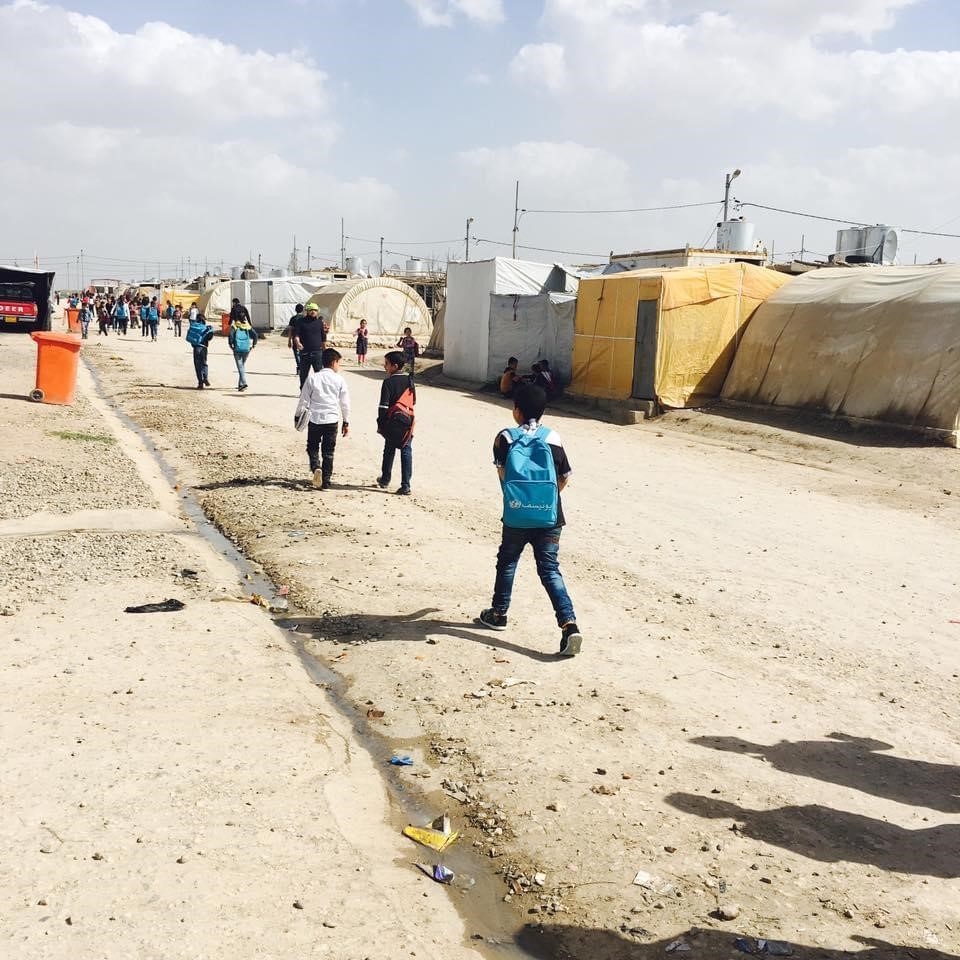
Zakho after ISIS (2017 – )
With the increasing importance of the Zakho district, especially the economic ones, and the continuous growth of commercial transactions with Turkey, in addition to its strategic location, the Kurdistan Regional Government decided in 2021 to make Zakho district a special administration directly linked to the Council of Ministers of the Region.
This means more care and attention specific to the district, and less red tape and bureaucracy in dealing with development and service programs in it.
On the other hand, Zakho is facing great challenges and difficulties:
Despite the restoration of control over the areas occupied by ISIS in the Nineveh Governorate (Sinjar, Nineveh Plain, and others), not all of the displaced have returned to their areas, especially in the Sinjar area. This is due to several reasons, including the extent of the destruction in these areas and the weak allocations for reconstruction on the one hand, and the security situation in terms of the multiplicity of military and security agencies in the Sinjar region (PYD (a Syrian version of PKK), the Popular Mobilization Forces (Shiite militia), the Iraqi army, Yazidi military formations, and Turkish military operations), In addition to the duplication of administration between administrative officials who are appointed by the Nineveh Governorate and others appointed by the de facto authority (PYD).
Therefore, thousands of displaced families in Zakho did not return to their areas in Sinjar, as the six camps still exist in Zakho (the largest of which is (Jim Mashko), in addition to Bersvi 1 and 2 camp, Baged Kendal, Qadia, and, Darkar).
On the other hand, Turkey, under the pretext of fighting the PKK, continues its military operations (air bombardment, the establishment of military sites and observation points, ground military operations, etc.) that led to the displacement of dozens of villages in the border area, including many Christian villages.
Ethno-religious diversity in Zakho
Like the rest of the districts and sub-districts in Dohuk Governorate and the whole of Kurdistan, the Zakho district includes a beautiful diversity of societal components, where there is religious, national, linguistic, and other diversity.
At a time when the Muslim Kurds constitute the vast majority in Zakho, there is a historical demographic presence of other ethno-religious communities.
Christianity in Zakho is rooted and deep since the beginnings of Christianity and the early church in Mesopotamia in the early Christian centuries.
The Church of the East is the church that has been always present in the district of Zakho and its extensions to the north to the region of Bhutan in present-day Turkey, to the south to the Nohadra region (Dohuk) and the Nineveh Plain, or to the east to the region of Aqrah and Erbil.
The district of Zakho is the center of the diocese of Zakho of the Chaldean Church since the nineteenth century. This diocese has 17 parishes in the villages of Zakho. The center of the diocese (the cathedral, the episcopal center, and their annexes) is located in the Mahalat Al-Nasara (i.e. Christian locality) in the center of the Zakho district. It was called by this name because it was a locality founded and inhabited by Christian families.
The Armenian Orthodox Church is present in Zakho, where it has a church and a parish in the center of the district, and even a residential locality called the locality of the Armenians.
The Syriac Catholic Church has a parish church at Zakho centre.
The Jewish presence has always been present in the areas of Zakho, especially in the city center, throughout history, but it has faded with the beginning of the twentieth century, and this presence has ended completely since the fifties of the twentieth century.
The Yezidi presence in the Zakho district is confined to a few villages belonging to the district of Rizgari, such as the village of Derabon, where Yezidis live with Christians.
Ethnically, in addition to the absolute Kurdish majority, the Assyrians Chaldeans, and Armenians historically lived in Zakho.
Linguistically, the Kurdish language is the dominant language in daily life and is the official language in departments and schools.
There is also Syriac spoken by the Assyrian Chaldean Syriac, which is also the curricula language of Syriac schools.
There are also Armenian and Arabic.
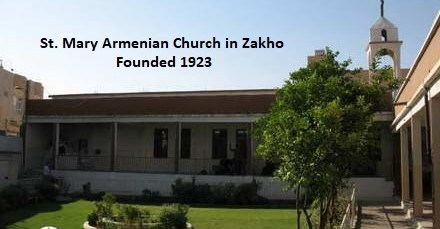
Economy
As all the people of Duhok, Zakho district inhabitants depend for their living resources on different sources of income:
The public sector, which constitutes the largest proportion of the workforce in the district, as well as all over Iraq, is a natural result of the nature of managing public utilities in Iraq, where the state manages them and not the private sector.
While this source was generating a stable and secure income for families, since 2014 it has declined a lot due to the financial crisis in the region, as public sector employees receive only 25% of their monthly salaries on an irregular basis.
As for the private sector, its most active and extensive field is the trade sector, due to the geographical location of Zakho, as it includes the most important commercial crossing for the region, which is the Ibrahim Al-Khalil-Silopi crossing with Turkey, and because the economic activity in the region for decades has lacked proper planning and support for the local product so that all Life needs (food, construction, health, etc.) are imported products.
Agricultural and livestock production, are sectors with very great potential provided by the topography nature of the region in terms of abundance of water, agricultural lands, and pastures for livestock.
However, despite these capabilities, the economic output of agriculture and livestock does not provide a good resource for farmers due to the lack of legislation and economic policies that protect and support the local product in the face of the imported product.
In any case, the economy of Zakho, similarly to the Duhok Governorate, is a fragile economy because it is generally a consumer economy with the absence of development programs for various economic activities in the industrial and agricultural fields.
Christians of Zakho Current Challenges
Zakho being part of Duhok governorate, and Zakho Christian community being part of Duhok and Kurdistan region Christian community, the Christians of Zakho face the same challenges.
Despite Duhok Governorate is one of the most important Iraqi governorates for its Christian presence in terms of demography (population and land) and in terms of the Christian presence and role, yet this presence faces real challenges that threaten the Christian existence and role in the medium and long terms.
In addition to the challenges that Iraq and the Region are facing from a general point of view, the Christians of the region face more challenges:
1- Continuous migration to the countries of the diaspora with the transformation of the diaspora into an appealing factor for families in the homeland, instead of it being a support factor for their existence. The migration is increasing because of the political, security and economic factors, in addition to the feeling of being discriminated and the fears caused by the growth of the political Islamic movements which collectively lead to the lack of future clear vision to achieve a stable state of equal citizenship.
3- The depletion of the economic resources and savings of Christian families in the host communities or those displaced to the Region from the rest of Iraq, which drained them with financial burdens and are now living in conditions of need and poverty that they have not experienced in previous decades.
4- The difficulties of integrating the displaced persons settled in the Region with the surrounding environment of the new area. All this resulting in restriction of employment opportunities, which are essentially already weak and limited, to the moral frustration resulting from the inability to communicate in daily life in the markets, schools or departments, weighs heavily on them.
5- Unequal opportunities between the Christian “minority” and the Muslim “majority” in the labour market in its public and/or private sectors.
6- The landgrab of agricultural lands in many Christian villages and towns that leads to economic loss for the people on one hand and threatening the identity of the villages on other hand.
7- The Turkish military operations are causing losses of properties and fields of the Christian villages nearby the borders and forcing the families to flee. In addition of deepening the feeling of mistrust of having a stable and secured life.
Prominent people from Zakho
Chor-Bishop Paul Bedaro (1887 – 1974)
He was born in the village of Bedaro, which is located two kilometres west of the city of Zakho.
He entered Saint John Priestly Institute for the Dominican Fathers in Mosul in 1900, graduated from it and was ordained a priest in 1912, and returned to his village of Bidar. Then he was sent to the village of Fishkhabur and served there for three years, from 1920 to 1923.
He worked as a teacher in Zakho and Mosul and was fluent in several languages: Syriac, Arabic, Kurdish, French, English, and Latin.
In the year 1933, year of Assyrian massacre in Sumail (nearby Duhok), he was sent to serve his people in Syria and Lebanon where he remained there until 1965, when he returned to his homeland, Iraq, as a fighter in the ranks of the Kurdish revolution in Iraqi Kurdistan.
He was very close to the Kurdish leadership.
He wrote a famous poem about Sumail massacre.
During the time of the Chaldean Patriarch Mar Paul Sheikho, he was ordained at the rank of Chor-Bishop and was appointed as a teacher at the priestly institute in Zakho.
Father Paul Bedaro was a faithful, energetic, successful, and effective priest who was familiar with the different aspects of life, society, and science. He moved from this foundation as a national and humanitarian fighter who lived the struggle practically on the mountains of his homeland Iraq. He was a great teacher and the author of many books and published books, including the manuscript in Syriac and Arabic, including: Syriac grammar book 1950, The Student’s Guide Book, The Book of My Beloved Nation, A collection of poetry on the Sumail massacre, The bomb of the Bedaro, The fall of kings, and other lost works.
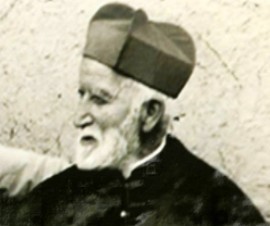
Martyr Salih Al-Yousifi (1918 – 1981)
is one of the founders of the Kurdistan Democratic Party and one of its political leaders in various stages, whether in the stage of the Kurdish revolution or during the stages of political agreements with the Iraqi government.
He was assassinated by a parcel bomb on June 25, 1981, in Baghdad.
A monument was erected in the Zakho Center in 1997.
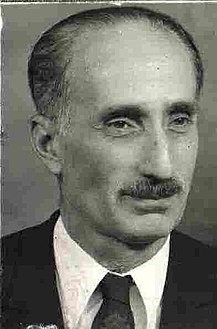
The artist Ardwan Zakholy (1957 – 1986)
is one of the well-known Kurdish singers who introduced modern music to Kurdish singing while preserving the spirit of performance and artistic style. He died at the age of 29 when he was poisoned by the Iraqi regime because of his stances on the regime. A monument was erected to him in Zakho.
Hazem Bek Yousif Basha (1901 – 1954)
was the minister during the royal era, as he was appointed as a minister in the government of Tawfiq Al-Suwaidi in 1950, and he was known as Father of the Poor.

